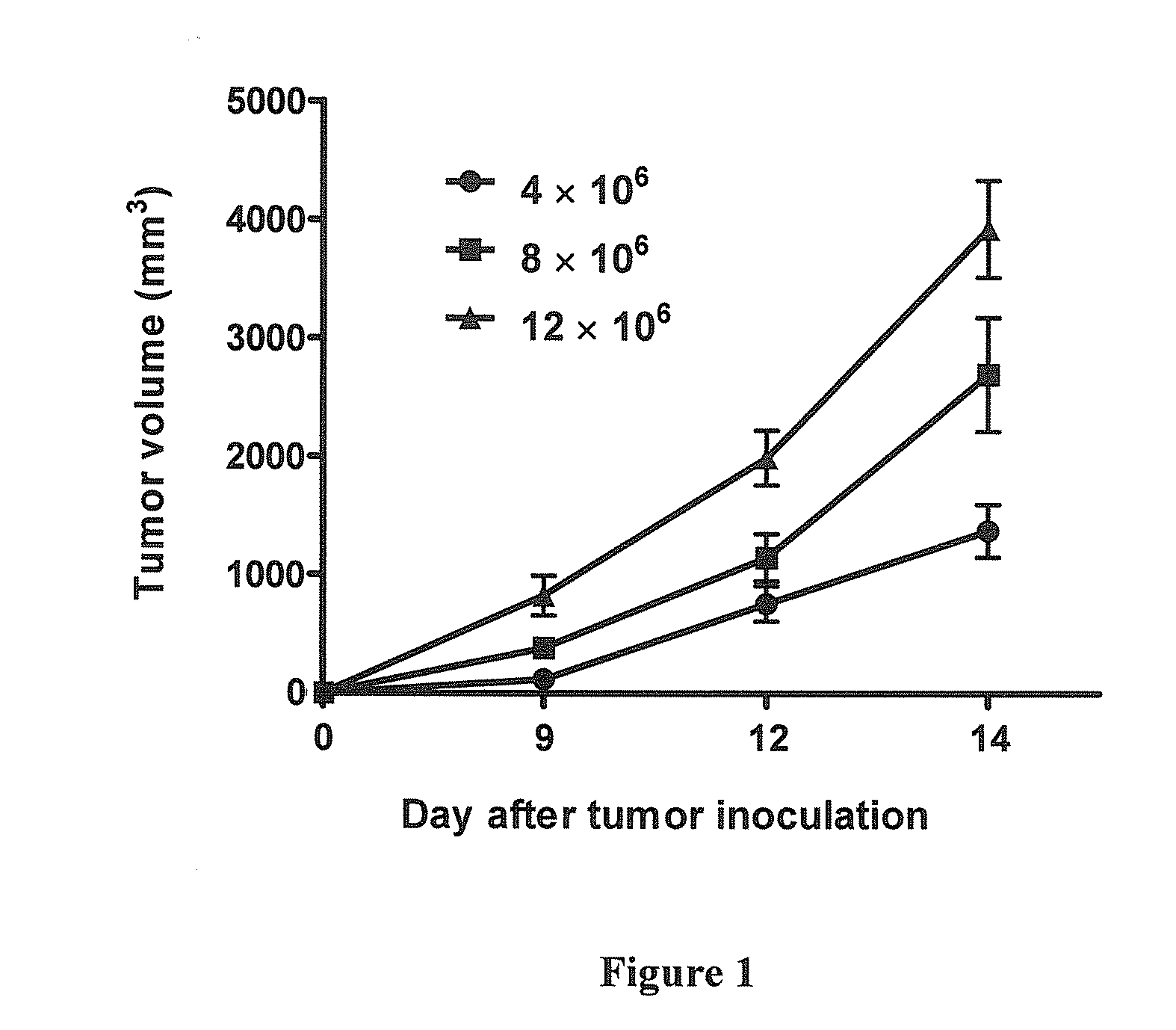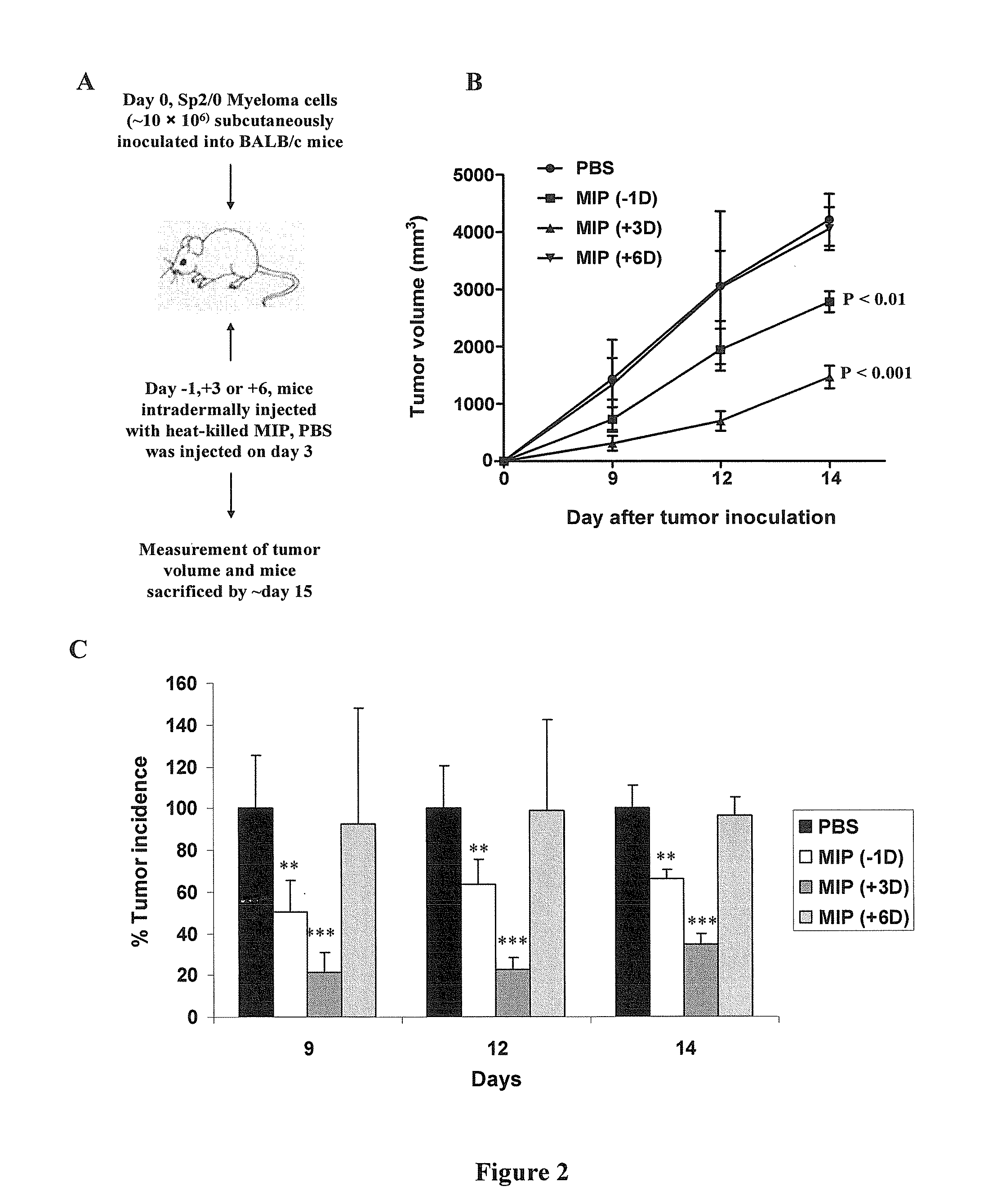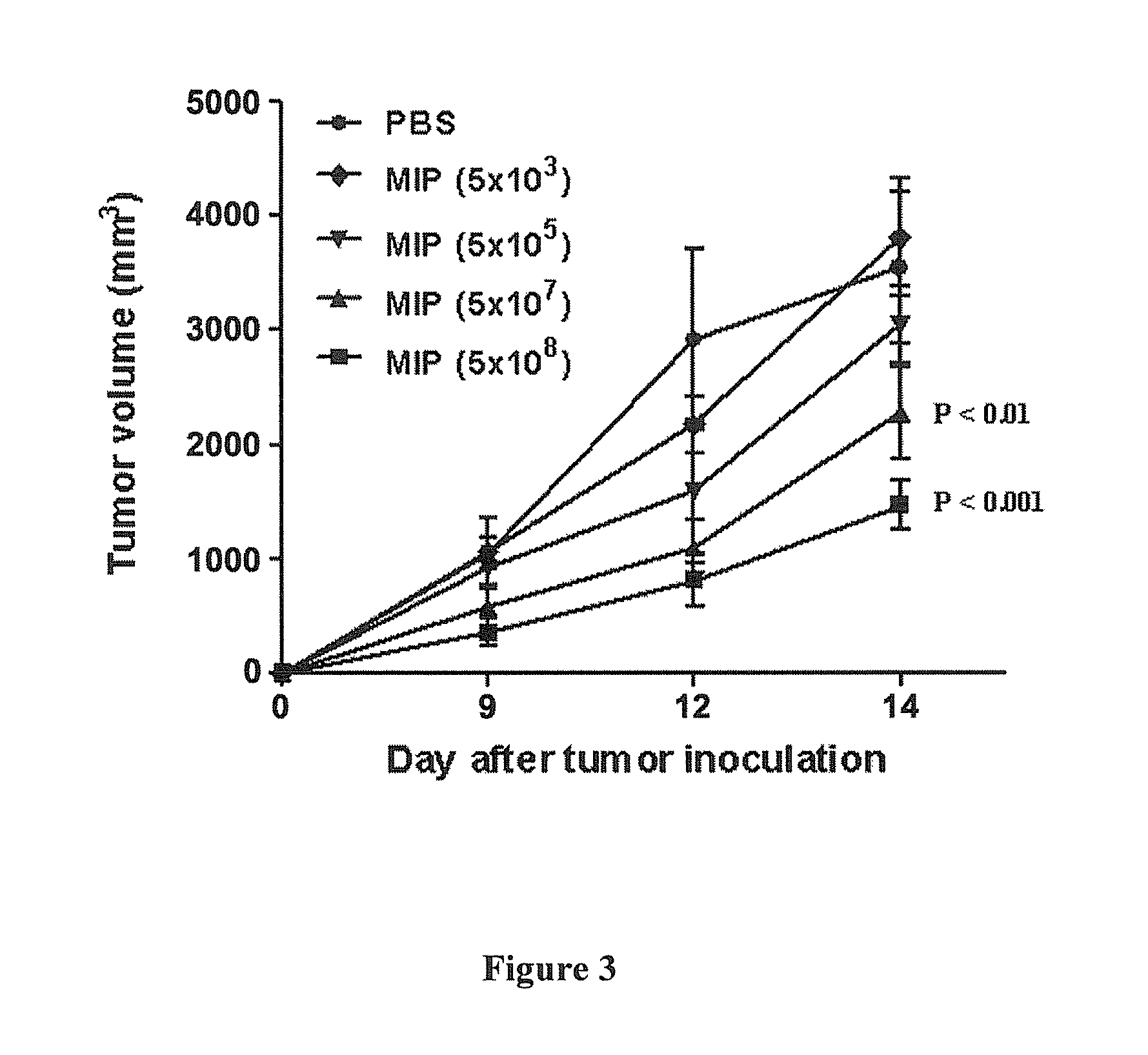Synergistic combination and method thereof
a combination and synergistic technology, applied in the field of cancer biology, can solve the problems of high toxicity of multiple and high-dose chemotherapeutic drugs, inability to achieve complete cure, and inability to meet the efficacy of chemotherapeutic drugs combined with stem cell transplantation,
- Summary
- Abstract
- Description
- Claims
- Application Information
AI Technical Summary
Problems solved by technology
Method used
Image
Examples
example 1
Standardization of Dose of Sp2 / 0 Myeloma Cells Required to Induce Solid Subcutaneous Tumors in BALB / c Mice
[0060]BALB / c male mice, aged 6-8 weeks and weighing ˜18-25 g, are procured from the Central Animal Facility, Indian Institute of Science, Bangalore. All mice received care according to institutional guidelines and are maintained under controlled conditions and fed with a standard diet.
[0061]Sp2 / 0 cells, a myeloma cell line, is grown in T175 flasks in IMDM complete medium supplemented with 10% fetal bovine serum, 2 mM L-glutamine, 100 U / ml penicillin, 100 μg / ml streptomycin, 10% nonessential amino acids, 10% HEPES, 10% sodium pyruvate, 50 μM 2-ME, 10 μg / ml gentamycin in a humidified atmosphere of 5% CO2 at 37° C.
[0062]An experimental syngeneic tumor model using the myeloma, Sp2 / 0 in BALB / c mice is studied. Sp2 / 0 cells injected subcutaneously (s.c) develop tumors and is used as an in vivo model for tumorigenesis. Different amounts of cells are washed and injected s.c. to establish...
example 2
Comparative Efficacy Between the Prophylactic and Therapeutic Mode of Treatment of Sp2 / 0 Myeloma by Mycobacterium Indicus Pranii
[0065]Immunoprophylactic and immunotherapeutic mode of Mycobacterium indicus pranii administration to BALB / c mice bearing Sp2 / 0 tumors are compared by injecting Mycobacterium indicus pranii intradermally one day prior to or 3 and 6 days after Sp2 / 0 cell implantation. Tumor volume is measured kinetically for monitoring the growth of Sp2 / 0 tumors. Phosphate Buffered Saline (PBS) is intradermally injected into control mice.
[0066]The FIG. 2 depicts in vivo efficacy of Mycobacterium indicus pranii (MIP) on Sp2 / 0 myeloma model. BALB / c mice (5 per group) of 6 to 8 weeks of age are subcutaneously injected with Sp2 / 0 myeloma cells (˜10×106 cells / mouse). Thereafter, mice are intradermally injected with Mycobacterium indicus pranii (˜5×108) either 1 day prior to or 3 or 6 days post-inoculation of tumor cells. Tumor volume is estimated on 9th, 12th and 14th day of tum...
example 3
Comparative Efficacy of Different Doses of Mycobacterium Indicus Pranii
[0068]Next, the optimum dose of Mycobacterium indicus pranii required for reducing the tumor size and delaying the appearance of tumors is titrated. Comparative efficacy of different doses of Mycobacterium indicus pranii in Sp2 / 0 myeloma bearing mice is provided in FIG. 3. BALB / c mice (5 per group) of 6 to 8 weeks of age are subcutaneously injected with Sp2 / 0 Myeloma cells (˜10×106 cells / mouse). Mice are intradermally injected with different doses of Mycobacterium indicus pranii (5×103, 5×105, 5×107 and 5×108) 3 days post-inoculation of tumor cells. Tumor volume is estimated on the 9th, 12th and 14th day of tumor inoculation. Vehicle alone (0.1 ml of PBS) is used as control and intradermally injected 3 days after administration of cells. The effect of Mycobacterium indicus pranii is dose dependent and maximum reduction in tumor volume is observed when mice are administered with ˜5×108 Mycobacterium indicus prani...
PUM
| Property | Measurement | Unit |
|---|---|---|
| body weight | aaaaa | aaaaa |
| body weight | aaaaa | aaaaa |
| volume | aaaaa | aaaaa |
Abstract
Description
Claims
Application Information
 Login to View More
Login to View More - R&D
- Intellectual Property
- Life Sciences
- Materials
- Tech Scout
- Unparalleled Data Quality
- Higher Quality Content
- 60% Fewer Hallucinations
Browse by: Latest US Patents, China's latest patents, Technical Efficacy Thesaurus, Application Domain, Technology Topic, Popular Technical Reports.
© 2025 PatSnap. All rights reserved.Legal|Privacy policy|Modern Slavery Act Transparency Statement|Sitemap|About US| Contact US: help@patsnap.com



